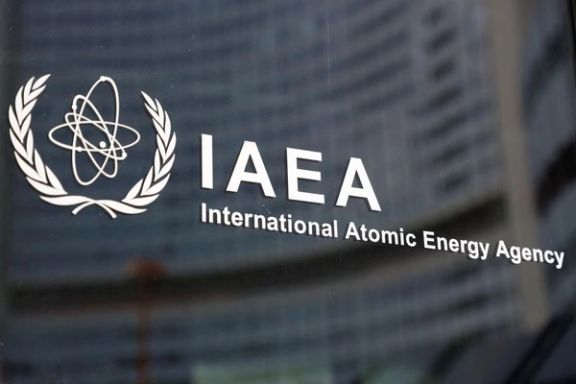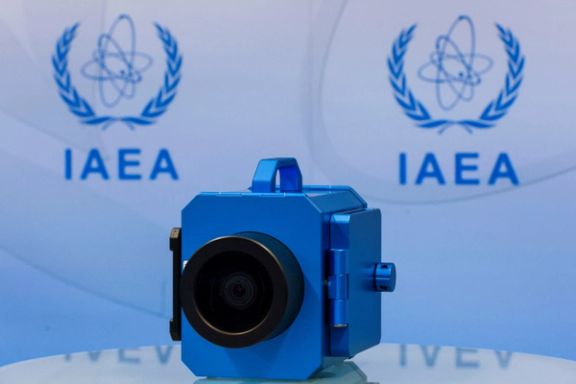Iran Makes Partial Concessions To UN Nuclear Watchdog

The UN nuclear watchdog has re-installed only some monitoring equipment that Iran ordered removed last year, the watchdog said in two reports on Wednesday.

The UN nuclear watchdog has re-installed only some monitoring equipment that Iran ordered removed last year, the watchdog said in two reports on Wednesday.
The reports indicate partial Iranian cooperation, first in years, with the International Atomic Energy Agency (IAEA) as the watchdog’s board of governors is scheduled to meet this month. In the past, Tehran has been censured by the board for lack of cooperation.
The re-installed equipment is a fraction of what the International Atomic Energy Agency (IAEA) had planned to set up to improve its surveillance of Iran's nuclear activities, as the IAEA said it had agreed with Iran in March in a bid to defuse a standoff between both sides over Iran's cooperation.
The limited progress described in the reports did, however, include the installation of real-time enrichment monitoring equipment on the only lines of centrifuges enriching uranium to up to 60% purity, near weapons grade, at Natanz and Fordow, a senior diplomat said.
At the same time, Iran's stock of uranium enriched to up to 60% has continued to grow and is now roughly enough for two nuclear bombs, one of the two confidential quarterly reports to member states showed.
Iran has been pressing ahead with its enrichment program, which it has been progressively expanding and accelerating, including at its underground Fordow site that was developed in secret and which may have been built inside a mountain to protect it from potential air attack.
The 2015 Iran nuclear deal imposed strict limits on the types of centrifuges Iran could use and where as well as the purity it could enrich to and the amount of enriched uranium it could hoard, in exchange for the lifting of international sanctions against Iran.
After then-President Donald Trump pulled the United States out of that deal in 2018 and re-imposed sanctions, Iran breached and moved beyond the deal's enrichment level of 3.65 percent purity. By early 2021, as the new Biden administration signalled its readiness to re-enter the agreement, Tehran adopted a tough position and began enriching up to 20 and then 60-percent, to the point IAEA chief Rafael Grossi has called the deal an "empty shell" and diplomats say there are scant chances of reviving it.
One IAEA report on Wednesday said Iran now had 114.1 kg of uranium enriched to up to 60% and in the form of uranium hexafluoride (UF6), which can easily be enriched further - an increase of 26.6 kg from the previous quarter.
About 42 kg of uranium enriched to 60% is what the IAEA calls a "significant quantity", defined as "the approximate amount of nuclear material for which the possibility of manufacturing a nuclear explosive device cannot be excluded".

INVESTIGATION GETS AN EXPLANATION
Although the United States says there is no evidence that Iran has decided to proceed and build a weapon, in testimony to Congress in March, Gen. Marky Milley, chairman of the Joint Chiefs of staff, warned that Tehran could “field” a bomb in several weeks, if it made the crucial decision.
A senior diplomat has cautioned, however, that in practice it would take more than 55 kg of uranium enriched to 60% to make one bomb because some material is wasted during enrichment.
In addition, Iran's total stockpile of enriched uranium continues to grow and is now 23 times the 202.8-kg limit imposed by the 2015 deal, at 4.7 tonnes, the report said.
The IAEA also reported that after years of investigation and lack of progress with Iran on explaining uranium particles found at three sites, Iran had given a satisfactory answer on one of them to explain the presence of uranium particles there. The IAEA has also accepted Iran’s explanation about why particles of 83-percent enriched uranium were found earlier this year at one of its installations.
The Wall Street Journal reporter Laurence Norman, who has seen the report, tweeted that the IAEA had no choice but accept some explanations that seem plausible. If the Agency in the future comes across new information, it can re-open closed cases.
“Iran will conclude from this that by offering very little and quite possibly providing answers that aren't entirely accurate, they've whittled 4 safeguards files down to 2 and can keep grinding away until the agency gives up,” Norman wrote.
While the particles could be explained by the presence of a Soviet-operated mine and lab there and the IAEA had no further questions, a senior diplomat said, the IAEA's assessment remained that Iran carried out explosives testing there decades ago that was relevant to nuclear weapons.
The added monitoring equipment included surveillance cameras at a site in Esfahan (Isfahan) where centrifuge parts are made, one report said. The other added that the IAEA "awaits Iran's engagement to address" issues including the installation of more monitoring equipment and the two remaining sites where uranium particles were found.
With reporting by Reuters